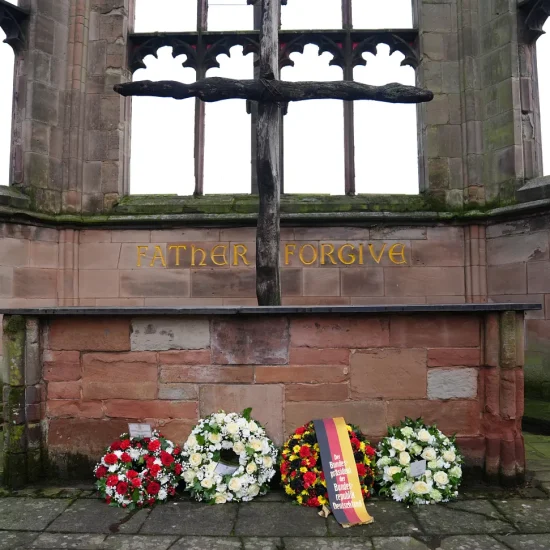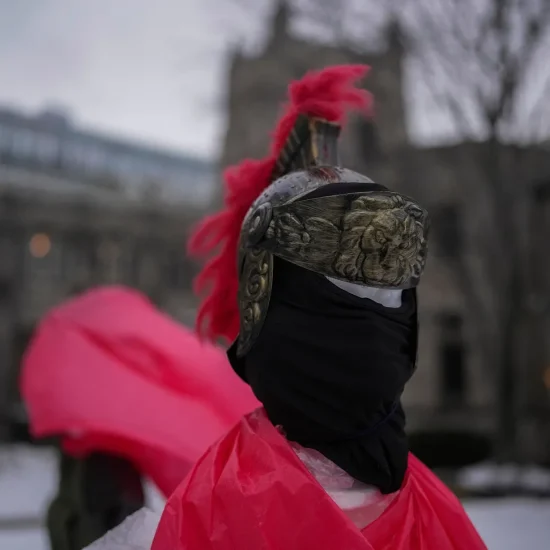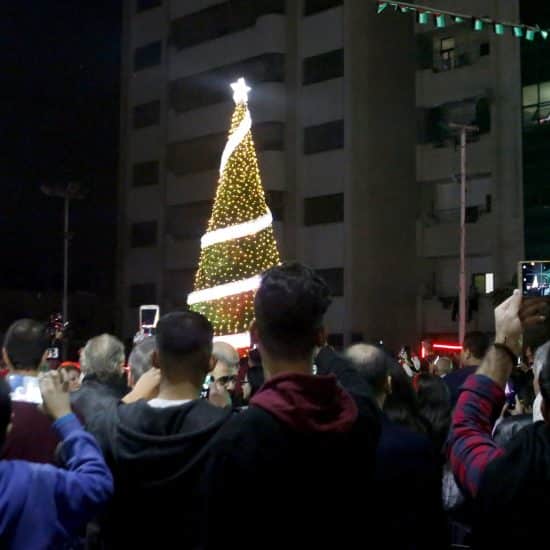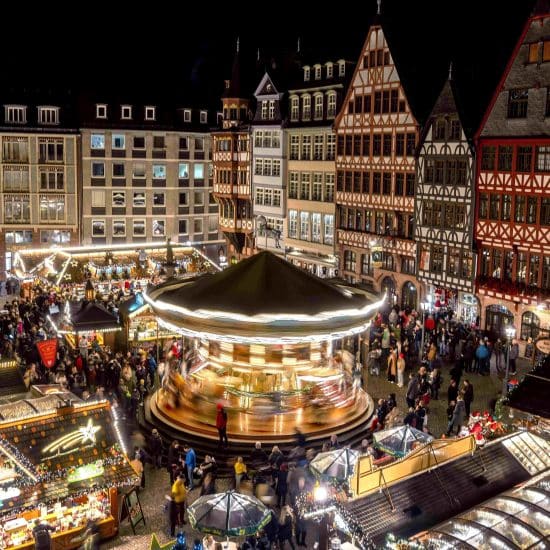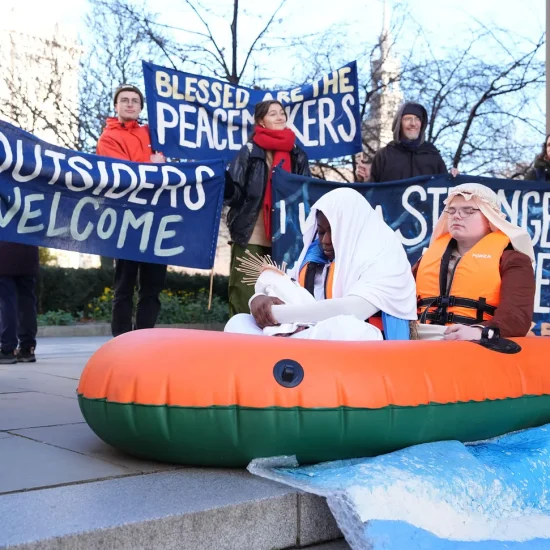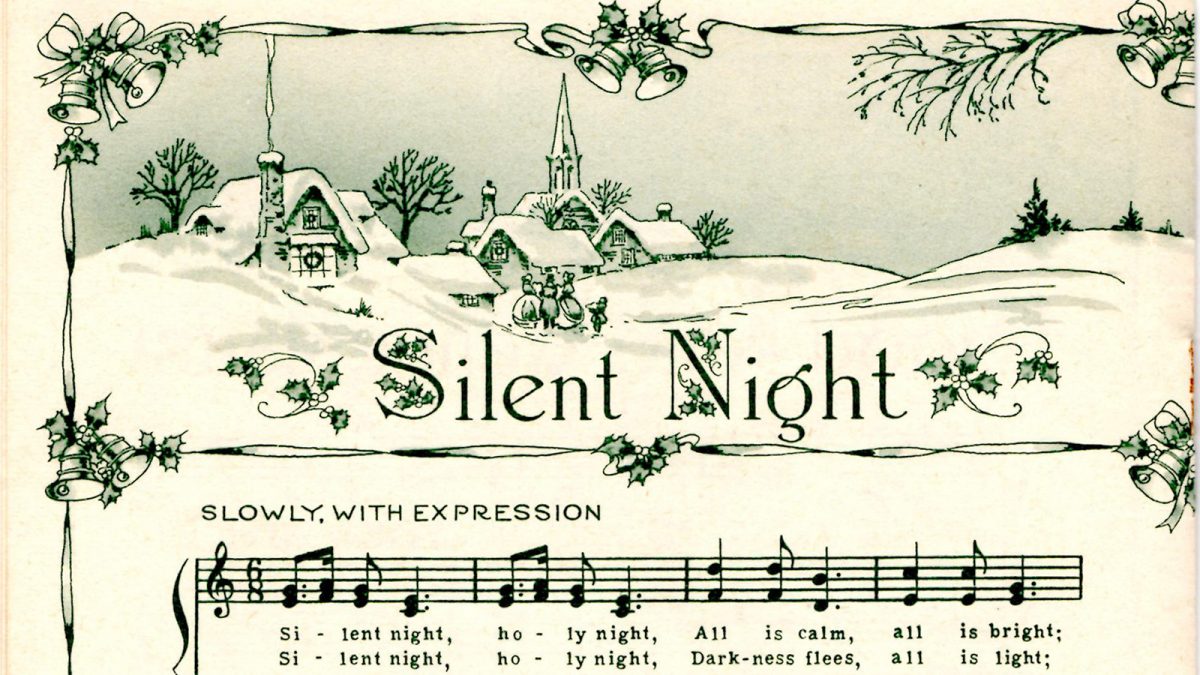
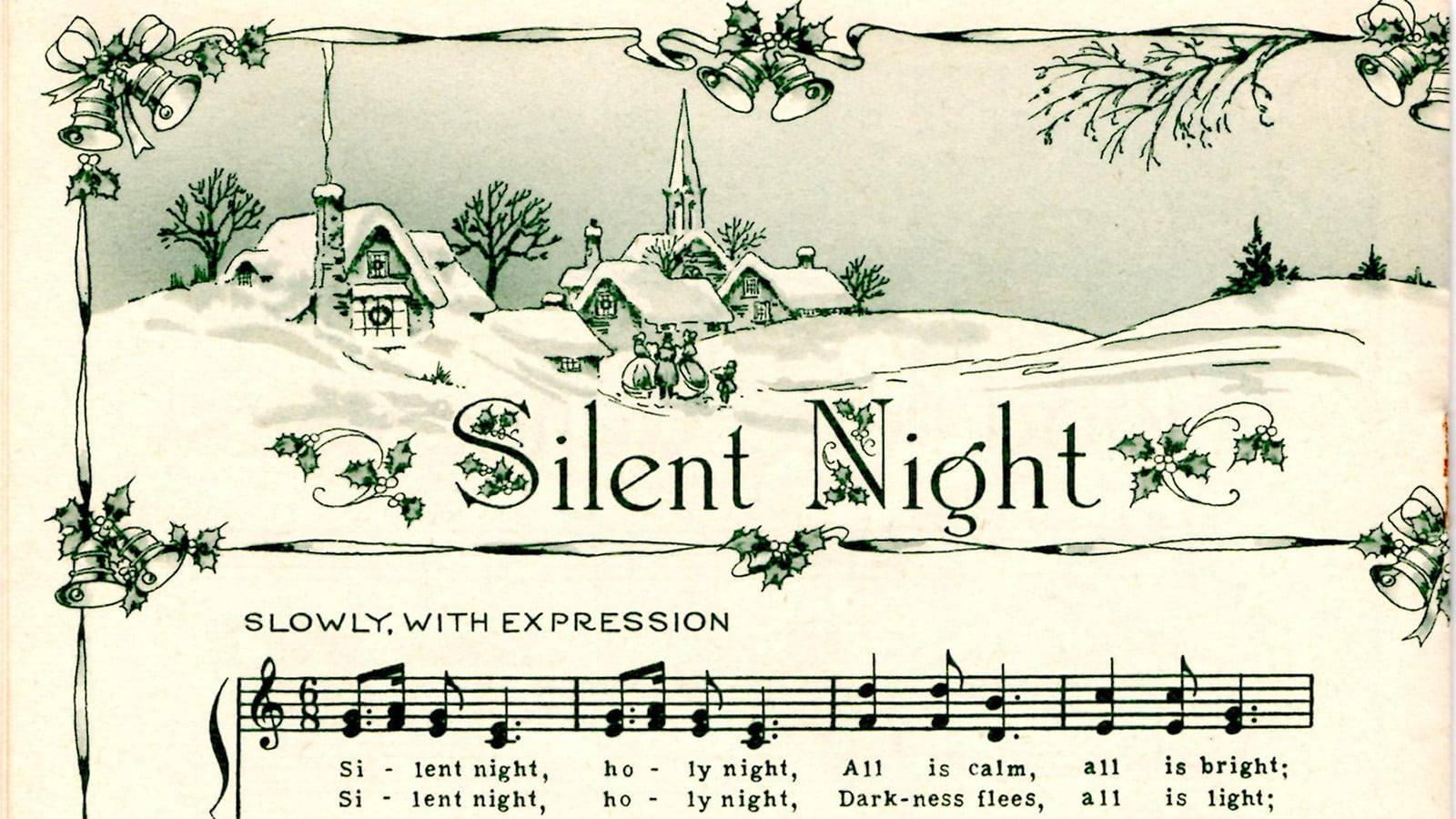 A stylized score of “Silent Night.” The Christian world is marking the famous hymn’s 200th anniversary this year. Image courtesy of Creative Commons(RNS) — It was the night before Christmas, and not a creature was stirring.
A stylized score of “Silent Night.” The Christian world is marking the famous hymn’s 200th anniversary this year. Image courtesy of Creative Commons(RNS) — It was the night before Christmas, and not a creature was stirring.
Except for the mice at St. Nicholas Church in Oberndorf, Austria, who were busy chewing through the bellows of the organ.
Their handiwork left the church’s priest, the Rev. Joseph Mohr, scrambling to find music for a Christmas Eve service. So he dashed off a few lines about the night Jesus was born and asked composer Franz Xaver Gruber to set the lyrics to a simple tune, played on guitar.
On that night 200 years ago, the two stood in front of the church’s nativity set and performed a song that began with words “Stille Nacht, heilige Nacht.”
 Franz Gruber, the composer of “Silent Night,” in a portrait by Sebastian Stief. Image courtesy of Creative CommonsBetter known as “Silent Night,” the song would go on to become one of the season’s most beloved Christmas carols, translated into more than 300 languages and sung all over the world by artists from Bing Crosby to Beyoncé.
Franz Gruber, the composer of “Silent Night,” in a portrait by Sebastian Stief. Image courtesy of Creative CommonsBetter known as “Silent Night,” the song would go on to become one of the season’s most beloved Christmas carols, translated into more than 300 languages and sung all over the world by artists from Bing Crosby to Beyoncé.
At least, that’s how the story goes.
Legends aside, the song endures in part because it brings a sense of calm to the hustle and bustle of the Christmas season, said Brian Lee, head of the music department at Moody Bible Institute in Chicago.
“We seem to live in such a noisy chapter in history,” Lee said. “I think even just the title of the song in and of itself speaks to people.”
In Austria, where “Silent Night” has been declared part of the nation’s cultural heritage, the country’s tourism office has planned a number of events, including concerts and exhibits, to celebrate the song’s anniversary this year. The events included a concert late last month at Trinity Church, a historic Episcopal church in New York City, where it is believed the song first was performed in the United States.
Moody also planned its annual Candlelight Carols program around the song — linking it to the famed Christmas Eve truce during World War I. During that brief respite from fighting, British and German troops set down their weapons and sang “Silent Night,” among other carols.
And modern hymn writers Keith and Kristyn Getty are making the song part of their Irish Christmas Tour, with stops at Carnegie Hall and the Kennedy Center.
Singing carols is as old as Christmas itself, Keith Getty noted in an email to Religion News Service. The story of Christmas and the birth of Jesus, he said, begins with Mary, Zechariah, Simeon and angelic choirs all bursting into songs.
But “Silent Night” is unique, he said.
“Its simplicity makes it easily accessible even for kids — both lyric and melody are haunting, unique and yet painfully simple,” Getty said. “If only we had the potion to reinvent that!”
Part of the song’s genius is its simplicity, said Michael Hawn, a global hymnologist and professor emeritus of church music at Perkins School of Theology in Dallas. The lyrics and music paint a scene, and it “doesn’t try to do too much,” he said.
Most of the story about its origins is true. But the details don’t quite match the legend.
While “Silent Night” may have been performed for the first time 200 years ago, Mohr had penned the poem a bit earlier, amid a trying time in Austria’s history at the end of the Napoleonic wars.
It’s true the church’s organ wasn’t working properly, though Hawn called the tale about the mice “a little bit over the top.” Using a guitar to accompany the song turned out to be “providential,” he said.
On the guitar, “Silent Night” sounds like a lullaby, according to the hymnologist. Its gentle 6/8 time signature mimicks a mother rocking her child — appropriate alongside lyrics about the baby Jesus sleeping in heavenly peace.
After its debut, it spread as a folk song, said Paul Westermeyer, professor emeritus of church music at Luther Seminary in St. Paul, Minn. The Rainer family singers, a traveling singing group from Austria, then brought it to America, performing the song in 1839 at Trinity Church.
Twenty years later, a priest at Trinity, John Freeman Young, published the first English translation of three verses of “Silent Night.” Young had been ordained at St. John’s Episcopal Church in Tallahassee, Fla., and later became bishop of Florida.
 A stained-glass window of Joseph Mohr, the author of the “Silent Night” poem, at the Silent Night Chapel in Oberndorf, Austria. Photo courtesy of Creative CommonsBetsy Calhoun, director of music at St. John’s, said the church wasn’t aware of its ties to the origins of “Silent Night” until this past year, when a musicologist researching the 200th anniversary of the song reached out to the church. The church also has ties to another famed Christmas carol: It’s home to the organ on which James L. Pierpont composed “Jingle Bells.”
A stained-glass window of Joseph Mohr, the author of the “Silent Night” poem, at the Silent Night Chapel in Oberndorf, Austria. Photo courtesy of Creative CommonsBetsy Calhoun, director of music at St. John’s, said the church wasn’t aware of its ties to the origins of “Silent Night” until this past year, when a musicologist researching the 200th anniversary of the song reached out to the church. The church also has ties to another famed Christmas carol: It’s home to the organ on which James L. Pierpont composed “Jingle Bells.”
St. John’s, like many other churches, has ended its Christmas Eve services for years with “Silent Night,” sung a capella by candlelight.
There’s always a tense moment when the lights dim and candle flames drift, and once, Calhoun remembers someone’s hair catching fire during a service.
For countless churchgoers, though, that moment of quiet reflection captures what Christmas is all about — a moment amid the noise of the holidays when all is calm and bright. It’s a moment to gather with family and friends to remember a holy infant so tender and mild.
“It’s just a very hushed, calm, just unified spirit that kind of takes over, and it is very moving,” Calhoun said.

